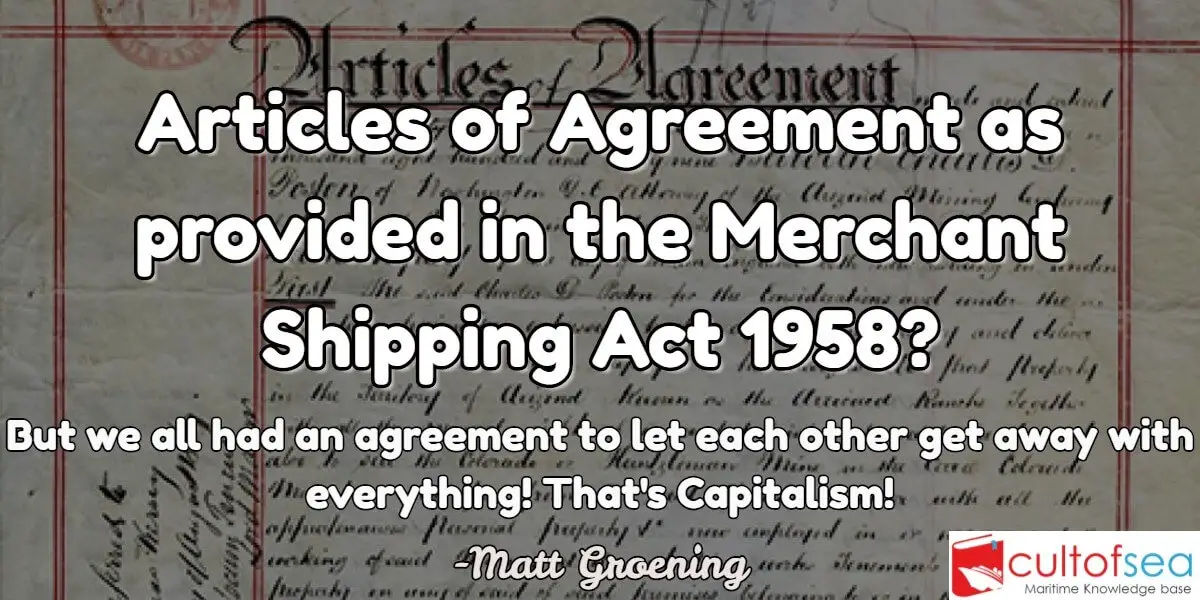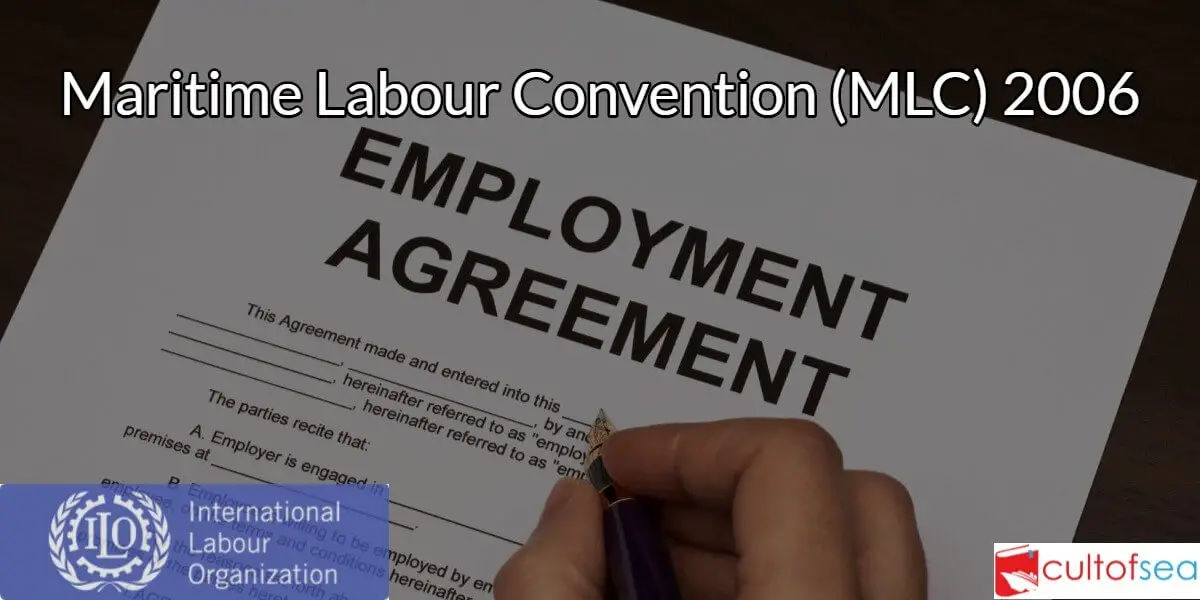Bill of Lading A Bill of Lading is a receipt for goods either received (before shipment) or shipped on board.Is a good evidence of the existence of a contract between the shipper and carrier. It is not a true contract since only one party signs it. Is a document of title, signifying that the holder has the legal right to possession of the goods it describes. Right to possession is different from the right to ownership, which is determined by the terms of the sale contract. May, depending on how Bill of Lading is made out, be negotiable i.e. transferable to a third party so as to … [Read more...]
Articles of Agreement – MSA 1958
Give the general terms of the Articles of Agreement as provided in the Merchant Shipping Act 1958 ? (Section 101) a. Five original copies of the articles of agreement may be signed between the employer/employer's agent and the seafarer ashore. This signing on will be done in the office of the employer/employer's agent, and not in the presence of the Shipping Master. The seafarer shall report on board ship with the first three signed original copies which shall be signed by the Master and the seafarer on board the ship. After this, the 1st and 3rd original copies would remain in the custody of … [Read more...]
Seafarers employment agreements – MLC 2006
Regulation 2.1 – CONDITIONS OF EMPLOYMENT Purpose: To ensure that seafarers have a fair employment agreementThe terms and conditions of employment of a seafarer shall be set out or referred to in a clear written legally enforceable agreement and shall be consistent with the standards set out in the Code. Seafarers’ employment agreements shall be agreed to by the seafarer under conditions which ensure that the seafarer has an opportunity to review and seek advice on the terms and conditions in the agreement and freely accepts them before signing. To the extent compatible with the … [Read more...]
Repatriation – MLC 2006
Regulation 2.5 – Repatriation Purpose: To ensure that seafarers are able to return home 1. Seafarers have a right to be repatriated at no cost to themselves in the circumstances and under the conditions specified in the Code. 2. Each Member shall require ships that fly its flag to provide financial security to ensure that seafarers are duly repatriated in accordance with the Code. Standard – Repatriation 1. Seafarers on ships are entitled to repatriation in the following circumstances: (a) if the seafarers’ employment agreement expires while they are abroad; (b) when the seafarers’ … [Read more...]


